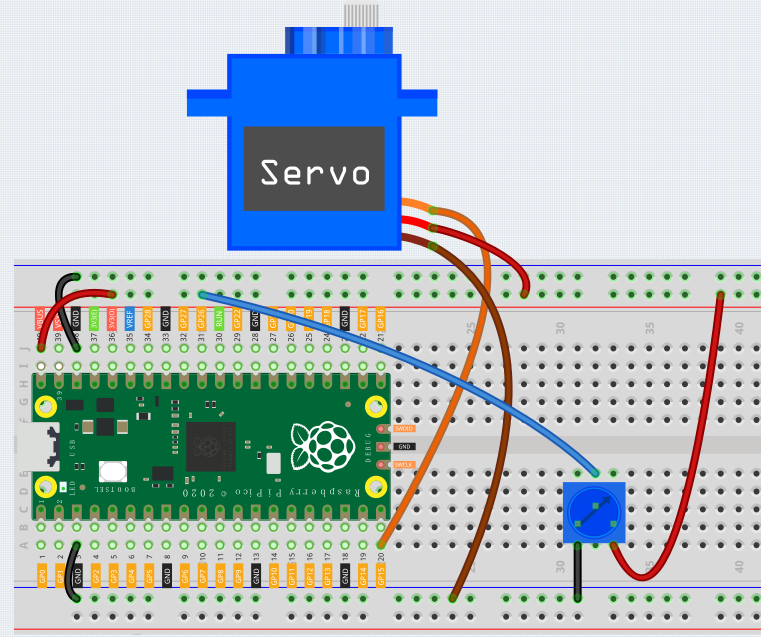2.7 Swing Servo¶
In this project, we use a servo and a potentiometer to simulate a steering wheel. Rotating the potentiometer will drive the servo to turn together.
Wiring
The orange wire (signal) of the servo is connected to GP15, the red wire (power) is connected to VBUS, and the brown wire (ground) is connected to GND.
Potentiometer is a resistive element with 3 terminals, the 2 side pins are connected to 5V and GND, and the middle pin is connected to GP26(A0).
Code
Note
You can refer to the image below to write code by dragging and dropping.
Import
2.7_swing_servo.pngfrom the path ofeuler-kit\piper. For detailed tutorials, please refer to Import the Code.
After connecting Pico, click the Start button and the code starts to run.
Turn the potentiometer and the servo will follow. To see it clearly, you can insert a rocker arm in the servo shaft.
How it Works?

Set the rotation speed of pin15 (servo) to 15%.
[servo pin() set speed to ()%]:Used to set the rotation speed of the servo pin, the range is 0%~100%.

Create a variable [angle], then read the voltage of A0. Use the [map value () from () to ()] block, map the voltage of A0 from 0 to 3.3V voltage range to 0 to 180°, and then use the mapped angle as the rotation angle of the servo.
[map value () from () to ()]: map a value from one range to another.
Note
The voltage of A0~A2 takes the range of 0~3.3V, even if your power supply is connected to VBUS (5V).

